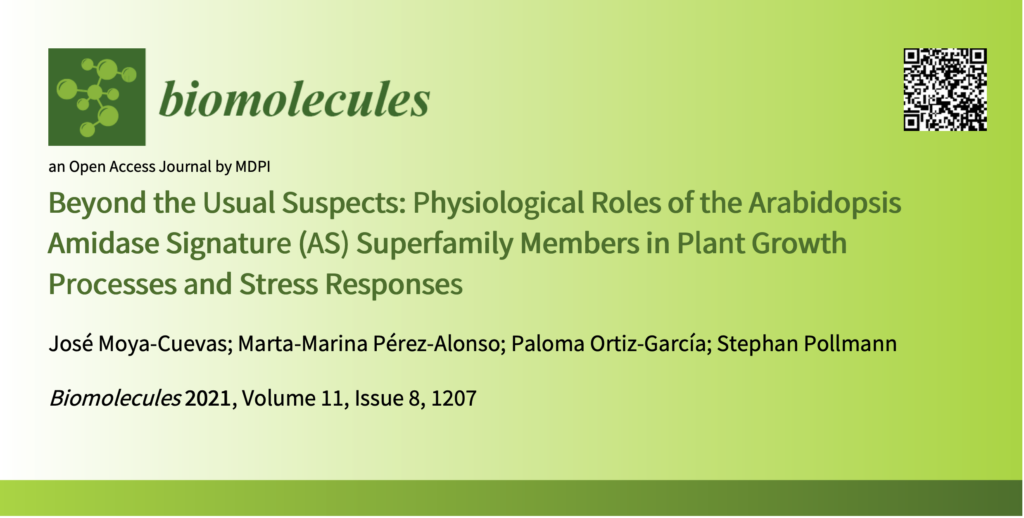On the art to stop the signal

We are very happy to see our latest review article published in Biomolecules. In this work, Pepe Moya summarised the up to date largely overlooked role of amide signalling compounds in plants, and how the termination of these signals may contribute to plant adaptations. The work pays special attention to the comparison of two Amidase Signature (AS) family members from Arabidopsis, AMI1 and FAAH, and their role in shutting down the activity of their corresponding amide signal molecule.
Moya-Cuevas, J. et al. 2021 Biomolecules
The diversification of land plants largely relies on their ability to cope with constant environmental fluctuations, which negatively impact their reproductive fitness and trigger adaptive responses to biotic and abiotic stresses. In this limiting landscape, cumulative research attention has centred on deepening the roles of major phytohormones, mostly auxins, together with brassinosteroids, jasmonates, and abscisic acid, despite the signaling networks orchestrating the crosstalk among them are so far only poorly understood. Accordingly, this review focuses on the Arabidopsis Amidase Signature (AS) superfamily members, with the aim of highlighting the hitherto relatively underappreciated functions of AMIDASE1 (AMI1) and FATTY ACID AMIDE HYDROLASE (FAAH), as comparable coordinators of the growth-defense trade-off, by balancing auxin and ABA homeostasis through the conversion of their likely bioactive substrates, indole-3-acetamide and N-acylethanolamine.


